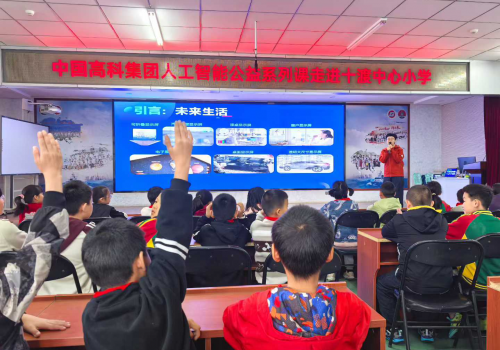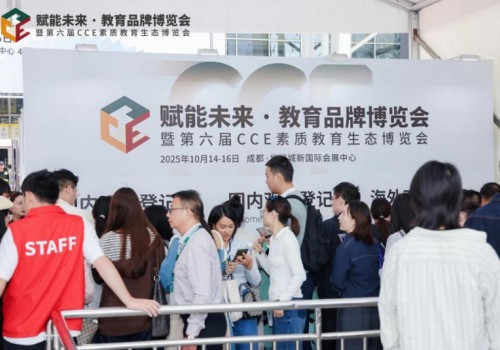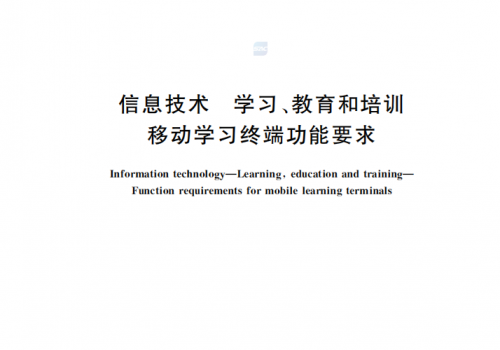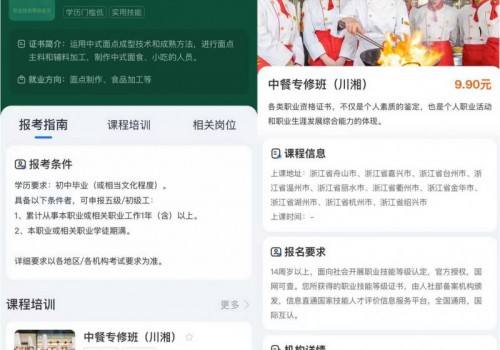In a recent article entitled “South China Sea: How We Got to This Stage,” published in the U.S.-based National Interest on May 9, veteran diplomat Fu Ying and senior researcher Wu Shicun examined the evolution of the maritime disputes in the South China Sea between China and some neighboring countries. They called for efforts to avoid further misunderstandings in order to prevent escalation of tensions amongst all parties concerned. The first part of the article was published in Issue No.21 of Beijing Review.
Fu is chairwoman of the Foreign Affairs Committee of Chinas National Peoples Congress, chairwoman of the Academic Committee of Chinas Institute of International Strategy under the Chinese Academy of Social Sciences, and specially-invited vice chairwoman of the China Center for International Economic Exchanges. Wu is a PhD senior research fellow and president of the National Institute of South China Sea Studies.
Edited excerpts of the second and last part of the article follow:
Tensions under the surface
For nearly 10 years after the introduction of the Declaration on the Conduct of Parties in the South China Sea (DOC), China was the only keen abider of the document. It refrained from taking actions that might escalate the dispute in the South China Sea and kept pushing for peace, cooperation and joint development in the dis- puted areas. By contrast, Viet Nam, Malaysia, the Philippines and some other ASEAN countries were half-hearted about the DOC. They kept on transforming and expanding occupied islands, reinforcing their administrative management of them, and they accelerated the development of oil and gas in surrounding waters. They also made occasional arrests of Chinese fishermen working in these waters. One common effort of these countries has been to solidify their illegal occupations and extend the territorial disputes to the maritime sphere. What they were trying to do was more like denying the existence of the disputes than shelving them. This enraged the Chinese media and public and elicited sustained attention.
Viet Nam has been the most active violator of the DOC. In April 2003, for example, it held a commemoration to celebrate the 28th anniversary of the “Liberation of the Nansha Islands.”In June that year, it signed a secret pact with Indonesia on the delimitation of the continental shelf in the South China Sea. In April 2004, it organized the first commercial tour to the Nansha Islands. In early 2005, it published a revised map of Viet Nam, which included Chinas Xisha and Nansha Islands in its Khanh Hoa Province. In early 2006, Viet Nam and Malaysia set up a navy hotline to coordinate resource development and settlement of their disputes concerning the Chinese islands. In April, Viet Nam started another bidding round for oil blocks in surrounding waters and announced cooperation with a third party to construct natural gas transmission pipelines in the Nansha Islands. In May 2007, it conducted an extensive geological survey in surrounding waters using a foreign, chartered survey ship. And, one month later, it held elections of “National Assembly representatives” on some of the Chinese Nansha islands.
In April 2003, Malaysia sent four flotillas with 11 survey vessels to the waters around Nantong Reef to conduct prospecting operations. In May of the same year, it organized an international maritime challenge in waters around Danwan Reef and approved for the first time commercial tours to Yuya Shoal organized by travel agencies. In November 2004, it published stamps showing a Malaysian map with newly included Nansha islands. In August 2008, Malaysias defense minister landed on Danwan Reef with some 80 journalists to declare “sovereignty.”
In April 2003, the Philippines celebrated the “25th anniversary of the establishment of Kalayaan Municipality” on Zhongye Island. In June 2006, it started to renovate and upgrade the airstrip and other facilities on the island. In March 2008, it set up satellite communications facilities on some of the occupied islands and shoals.
But, it must be admitted that, despite a continuing tug-of-war in the South China Sea, the general situation was under control before 2009. Soon thereafter, things became more complicated, mostly due to an official deadline set by the UN Commission on the Limits of the Continental Shelf (CLCS), according to which relevant states should submit by May 15, 2009 claims over continental shelves extending beyond 200 nautical miles from their territorial seas. An even greater factor is the introduction of the United States Asia-Pacific rebalancing strategy.
Shortly after coming to power in January 2009, the Barack Obama administration signaled that it would correct the George W. Bush administrations misplaced foreign policy by shifting the United States strategic priority to the Asia-Pacific region, which obviously contributed to the confidence of the other claimants in the South China Sea in challenging China.
Between January and February 2009, the Philippines House of Representatives and Senate adopted the Territorial Sea Baselines Bill, which claims Chinas Huangyan Island and some islands and reefs in the Nansha Islands as Philippine territory. On May 6, choosing to ignore the outstanding territorial and maritime delimitation disputes in these waters, Viet Nam and Malaysia jointly submitted to the CLCS information on the outer limits of the continental shelf in the South China Sea beyond 200 nautical miles from their claimed “territorial seas.”On May 7, Viet Nam separately submitted to the CLCS information on the outer limits of the continental shelf beyond 200 nautical miles from its “territorial seas,” claiming sovereignty over Chinas Xisha and Nansha Islands. Under such circumstances, China had no choice but to submit to the CLCS preliminary survey findings on the outer limits of the continental shelf beyond 200 nautical miles in order to prevent its interests from being further undermined.
The United States, meanwhile, started to have friction with China in the South China Sea. The year 2009 alone saw at least five confrontations between U.S. and Chinese ships, with the USNS Impeccable incident being the most conspicuous.
The year 2010 witnessed a faster shifting in the U.S. policy on the South China Sea, which showed an inclination to “take sides.”At the ministerial meeting of the ASEAN Regional Forum held in Hanoi, Viet Nam on July 23, 2010, U.S. Secretary of State Hillary Clinton spoke on the South China Sea issue, stating that the United States “has a national interest in freedom of navigation, open access to Asias maritime commons, and respect for international law in the South China Sea,” and emphasizing that claimants should pursue their territorial claims and accompanying rights to maritime space in accordance with international laws. Later, Clinton wrote in her memoir:“That was a carefully chosen phrase, answering the earlier Chinese assertion that its [Chinas] expansive territorial claims in the area constituted a ‘core interest.” Clinton went on to make a series of remarks on the Obama administrations Asia-Pacific policy and the South China Sea issue on subsequent occasions. The United States, meanwhile, has beefed up its presence and enhanced military exercises in the region.
The Chinese side, by contrast, continued its diplomatic efforts in order to maintain stability in the South China Sea and defuse tensions with ASEAN countries. China achieved some progress by its painstaking efforts to resolve disputes via peaceful talks. At the ASEAN-China Ministerial Meeting (10+1) held in Bali, Indonesia, in July 2011, the Guidelines to Implement the DOC were adopted by China and the members of ASEAN. China reached some understanding with the Philippines and Viet Nam through bilateral negotiations. Yet these efforts were not enough to offset the United States Asia-Pacific rebalance strategy, and claimants like the Philippines and Viet Nam, in turn, didnt display much restraint.
They began to step up their reclamation efforts on the encroached islands and reefs and to frequently conduct military exercises with the United States near the South China Sea. Some countries even sought to gang up against China, taking a series of provocative actions. In March 2011, the Philippine military disclosed plans to invest $230 million in the renovation of barracks and airports on South China Sea islands. In June and July, the Philippines and Viet Nam conducted a series of joint exercises with other foreign powers in the disputed waters. Looking to strengthen the Philippines territorial and maritime claims in this region, President Aquino III ordered the official use of “West Philippines Sea” to replace the internationally standardized geographical name of “South China Sea,” a move which to some extent gained official recognition from the United States. In March 2012, the Philippines and Viet Nam reached an agreement on joint military exercises and maritime border patrols in the South China Sea. In April of the same year, Viet Nam dispatched several monks to temples on South China Sea islands.
These provocative activities by some ASEAN member countries and the U.S. intervention have been closely watched and widely reported in China, evoking strong reactions among the public. Chinas policy of restraint is approaching breaking point as it struggles to maintain a balance between its policies and public opinion.
Wrestling among multiple players
In April 2012, the Philippine Navy provocatively arrested Chinese fishermen working in Huangyan Island waters in what was later known as the Huangyan Island Incident. Arguably, this became the “last straw on the camels back” in the fragile stability in the South China Sea, and tested the bottom line of Chinas policy and patience.
On April 10, 2012, Philippine warships launched a surprise raid on 12 Chinese fishing vessels working in the lagoon, disturbing and harassing their operations and even forcibly boarding one vessel and arresting the fishermen. Almost instantly, images of the arrested Chinese fishermen stripped to the waist and exposed to the scorching sun on the deck made headlines in print and digital media in China, triggering an outcry among the Chinese general public. Thus forced into taking countermeasures, China made urgent diplomatic representations to the Philippines and sent sur- veillance ships and fishing administrative ships to the waters around Huangyan Island. Both sides engaged in a tense standoff until June 3, by which time all the Philippine ships had left the lagoon. To prevent further moves by the Philippines, China stationed a surveillance ship in the waters surrounding Huangyan Island, putting the island under its control.
As if the Huangyan Island Incident was not bad enough for tensions, Viet Nam adopted its domestic Maritime Law on June 21, 2012, in an attempt to legalize its territorial claims in the South China Sea. On the day of its adoption, Chinas then Vice Minister of Foreign Affairs, Zhang Zhijun, summoned the Vietnamese Ambassador in China, Nguyen Van Tho, to protest against the move. On the same day, China announced its long-planned establishment of Sansha, a prefecture-level city, on Yongxing Island in the Xisha Islands. The citys jurisdiction covers Xisha, Zhongsha and Nansha Islands and surrounding waters. Relevant administrative, jurisdictional and military arrangements were made in the following months.
On January 22, 2013, the Philippines initiated an arbitral proceeding against China at the International Tribunal for the Law of the Sea. Shortly after this announcement, Chinas Foreign Ministry made multiple official responses: “The Philippines and the arbitral tribunal have abused relevant procedures and forced ahead with the arbitration, disregarding the fact that the subject matter of the arbitration involves territorial sovereignty and maritime delimitation and related matters, [and] deliberately evading the declaration on optional exceptions made by China in 2006 under Article 298 of the UN Convention on the Law of the Sea.” “China does not accept the arbitration initiated by the Philippines” and, therefore, “will not participate in the proceedings.”
Obviously, China disagrees with the Philippines, which applied for arbitration on account of its consultations and negotiations with China reaching an impasse. The fact is that ever since the Huangyan Island Incident, the Philippines has refused to engage in any serious dialogue let alone negotiations with China, and neither has it consulted the other DOC parties. As far as arbitration is concerned, China had already made a declaration on optional exceptions in 2006 under Article 298 of the UN Convention on the Law of the Sea. Since the arbitration courts jurisdiction covers sovereignty, historic rights and entitlement, China is exempt from the arbitration. No provision in the convention provides for the enforcement of an adverse ruling on China.
The subsequent Renai Shoal Incident and Drilling Platform 981 Standoff further aggravated the situation. As the vessel it ran aground on Renai Shoal disintegrated, the Philippines continued looking for opportunities to start construction projects to get the shoal under its control. China has kept a watchful eye on these activities. In March 2014, China discovered that Philippine warships were transporting supplies to Renai Shoal and immediately intercepted them, which led to a standoff between the two sides. The Philippines incited a storm of media coverage of the incident, trying to elicit global attention and U.S. intervention.
In May 2014, a drilling operation by the HYSY 981 rig was completed near Chinas Xisha Islands The drilling was performed 17 nautical miles from the south of Zhongjian Island between May 2 and August 15. During this time hundreds of vessels sent by the Vietnamese Government harassed the operation, resulting in heightened tensions and multiple chases and even collisions between a China Coast Guard flotilla and Vietnamese law enforcement vessels.
In 2013, in view of the changing situation in the South China Sea, to meet the civil and defense needs on the islands and to defend its sovereignty, China launched reclamation projects on those of the Nansha islands that it controlled. As all of the islands are far from international navigation routes, there was no question of the projects having any impact on freedom of navigation. But the United States and the Philippines kept accusing China and hyping the issue.
In response to the concerns, Chinas Foreign Ministry spokeswoman, Hua Chunying, gave a detailed explanation at a press briefing on April 9, 2015: The Chinese Government has been carrying out maintenance and construction work on some of the garrisoned Nansha islands and reefs with the main purposes of optimizing their functions, improving the living and working conditions of personnel stationed there, better safeguarding territorial sovereignty and maritime rights and interests, as well as better performing Chinas international responsibility and obligation in maritime search and rescue, disaster prevention and mitigation, marine science and research, meteorological observation, environmental protection, navigation safety, fishery production services and other areas. The relevant construction, which is well within Chinas sovereign responsibility, does not impact or target any country. It has recently been reported that a series of projects are underway to construct facilities that can provide public services, such as lighthouses, automatic weather stations, marine observation centers and marine research institutes. Five lighthouses for navigation safety have been built, and four of them have been put into use.
Chinas actions have not been fully understood by those of its neighbors who have expressed concerns. The United States has also stepped up its intervention, buzzing over Chinas island reclamation projects, using rhetoric like “reaching too far and too fast” and“islands militarization” to pile pressure on China, and even sending ships to sail near the Nansha and Xisha Islands. All these were perceived in China as serious security challenges.
From the perspective of many Chinese people, the United States is the invisible hand behind the rising tension in the South China Sea. First, it is increasingly targeting China as it steps up its Asia-Pacific rebalance strategy. In 2013, the United States announced it would reinforce its military presence in the Asia-Pacific region by deploying 60 percent of its fleet and 60 percent of its overseas air force to the region by 2020. Also, the U.S. military has claimed it is threatened by “Chinas anti-access and area denial efforts” and has actively promoted operational concepts like Air-Sea Battle with China as a main target. These moves have undoubtedly further complicated and intensified the situation in the South China Sea and in the Asia-Pacific region as a whole. Many Chinese scholars have begun to suspect that the United States may be creating illusionary threats and crises in the region that could turn into a selffulfilling prophecy.
Since 2014, the United States has responded more clearly to China over the South China Sea issue in the shape of direct intervention in the disputes, which is often in favor of other claimants, especially its own allies.
On February 5, 2014, U.S. Assistant Secretary of State for East Asian and Pacific Affairs Daniel Russel said at a congressional hearing that Chinas “lack of clarity with regard to its South China Sea claims has created uncertainty, insecurity and instability in the region.” He also urged China to clarify its ninedash line claim. This was the first explicit and official comment made by the United States to challenge China on the South China Sea issue. Obviously, the United States was well aware that as the Nansha Islands dispute was still unsettled, any attempt to clarify the dash line or maritime claims would only lead to an escalation of tensions. In the same month, U.S. Chief of Naval Operations (CNO) Admiral Jonathan Greenert announced U.S. support for the Philippines in the event of a China-Philippines conflict. This is the toughest stance expressed by the United States in the China-Philippine dispute. At the Post Ministerial Conference of the ASEAN Foreign Ministers Meeting in Naypyidaw in August 2014, U.S. Secretary of State John Kerry directly called for a moratorium on land reclamation, building on disputed islands, and actions that might further escalate disputes.
With the intent of making it more costly for China to take action in the South China Sea, the United States has opted for a cost-imposing strategy against China by resorting to political, diplomatic, public opinion and military means so as to force China to pull back without inciting armed confrontation. In 2015, the United States released three strategic security documents—“Forward, Engaged and Ready: A Cooperative Strategy for 21st Century Seapower,” “National Security Strategy” and “National Military Strategy and Asia-Pacific Maritime Security Strategy”—all of which talked about the South China Sea issue at fairly great length and asserted that the United States would make China pay a price.
From the Chinese perspective, as well as undermining its credibility as a potential mediator, the United States dramatically altered policy on the South China Sea has heightened Chinas concerns that its interests will be further undermined and, thus, has inspired its determination and measures to defend them.
Echoing its policy readjustments, the United States has accelerated provocative and coercive actions that are clearly targeted at China. For example, U.S. surveillance at the Nansha Islands and its surrounding waters has intensified. The number of sorties by U.S. planes to carry out close-up reconnaissance of the South China Sea Islands increased from about 260 in 2009 to over 1,200 in 2014. Also, as a way to flex its muscle and assert freedom of navigation, it keeps sending ships to sail within 12 nautical miles of the Nansha Islands or even the non- disputed Xisha Islands. On October 27, 2015, the USS Lassen navigated within 12 nautical miles of Zhubi Reef. On January 30, 2016, the USS Curtis Wilbur trespassed on Chinas territorial waters near Zhongjian Island. Quite different from its usual practice, the U.S. media began to buzz over these events. U.S. Pacific Command Commander Harry Harris even openly declared more sophisticated and wide-ranging activities in the future including sending warships to the South China Sea about twice a quarter.
Other deterrent actions taken by the United States include the following: In July 2015, the new commander of the U.S. Pacific Fleet, Admiral Scott Swift, joined a surveillance mission on board the ASW P-8A Poseidon to conduct close-up reconnaissance in the South China Sea; on November 5, U.S. Secretary of Defense Ashton Carter cruised on the USS Roosevelt, and while he delivered a speech on board, the carrier churned through disputed waters about 150-200 nautical miles south of the Nansha Islands and about 70 nautical miles north of Malaysia; on November 8 and 9, two U.S. B-52 strategic bombers flew near the Chinese islands under construction; and during his visit to the Philippines on April 15, 2016, Carter landed on the aircraft carrier, USS John C. Stennis, and joined a patrol in the South China Sea. U.S. warships and planes also frequently conduct“innocent passage” through Chinas territorial waters and airspace.
The United States has also sought to strengthen its alliance and forces surrounding the South China Sea. Since the implementation of the Asia-Pacific rebalance strategy, it has been stepping up deployment of its forces around the perimeter of the South China Sea including at the Australian port of Darwin, the Changi Naval Base in Singapore, and in the Philippines and Malaysia. The United States is also strengthening cooperation with Malaysia, Indonesia and Viet Nam for the purpose of conducting intelligence gathering and enhancing maritime domain awareness capabilities in the region. Furthermore, it is expanding military support to some claimants in the disputes, such as the Philippines and Viet Nam, to help improve their reconnaissance, patrol and anti-access capacities. In March 2016, the United States and the Philippines announced at their sixth annual Bilateral Security Dialogue that U.S. forces would be allowed to use five Philippine military bases. In April 2016, the United States and the Philippines conducted their Shoulder-toShoulder exercises in the South China Sea again with more targeted activities, such as retaking control of islands and oil rig defense, obviously related to the South China Sea disputes.
The U.S.s military deployment in the South China Sea has further aggravated tensions in the region, giving the disputes in the South China Sea a larger-than-life role on the inter- national strategic chessboard. The apparent China-U.S. rivalry seems to be superseding other disputes in the region and has started to take center stage. Looking back at the post-Cold War era, we can see that nearly all the contentions and conflicts involved or were even engineered by the United States, some with complications that have lingered till today. The Chinese are thus prompted to ask the question, what is the United States playing at this time in the South China Sea?
Conclusion
As the above narrative shows, the situation in the South China Sea reached its present state as a result of the entangling effects of actions and reactions along multiple lines. There is also the influence of the changes in the international and regional security environments. The elements that pushed the spiraling twists and turns include not only sovereignty, resources and strategic security considerations but also tangible interests. There are also the problems of missing information and historical and institutional memory loss. Moreover, the guessing game about each others strategic intentions and policy objectives also plays a role. As a power from outside the region, the United States has played a major role since 2009 by coming into the issue and adjusting its policies toward the region. So now, whats next? What will happen in the South China Sea? The United States is trying to find out what Chinas next move will be. In China, meanwhile, suspicion is rising about U.S. intentions. Obviously, there is a risk of escalation of tension and a danger of strategic miscalculations.
Chinas pursuit of its objectives in the South China Sea—safeguarding its national territorial integrity and maintaining regional peace and tranquility—has consistently continued. To observe China, one should never lose sight of historical dimensions. Though China is growing into a strong nation, the painful memory of history has not been forgotten. The Chinese people have not forgotten that the country stumbled into the 20th century with its capital occupied by imperialists armies and that for over a century China suffered the humiliation of foreign invasion and aggression. This is why the Chinese people and government are very sensitive about anything related to territorial integrity and would never allow the recurrence of such events, even if it is just an inch of land. This is something the outside world needs to keep in mind when looking at China and trying to understand Chinas behavior. Admittedly, there is no major external threat that can endanger Chinas survival or development in todays world. China adheres to the path of peaceful development and is dedicated to promoting world peace, development and cooperation. Chinas belief and commitment are firm and unchanged.
In his speech at the opening ceremony of the Fifth Meeting of the Ministers of Foreign Affairs of the Conference on Interaction and Confidence Building Measures in Asia (CICA) on April 28, 2016, Chinese President Xi Jinping stated, “Let me stress that China is committed to maintaining peace and stability in the South China Sea. We firmly stand by our sovereignty and rights and interests in the South China Sea and remain committed to resolving disputes peacefully through friendly consultation and negotiation with countries directly concerned.”From the consultations Chinese Foreign Minister Wang Yi held in recent months with counterparts from ASEAN countries, one can also see that Chinas proposition of a “dualtrack” approach—resolving disputes peacefully through negotiation between the parties directly concerned, and China and ASEAN countries working together to maintain peace and stability in the South China Sea—has been well received and supported. ASEAN has started to realize the importance of keeping the situation under control and returning to dialogue.
So, to be specific, Chinas policy objectives in the South China Sea could be read from the following angles.
First, Chinas fundamental policy objective for the South China Sea is to protect the security of its sovereignty and maritime rights. Tactically, China has been coping with all motions by refraining from proactive motions, which means acting with restraint and taking countermeasures only when provoked. The Chinese people will not allow any further infringement of the countrys sovereignty and rights concerning land features in the South China Sea and, therefore, hold high expectations of the government to protect Chinas national interests. As for the current status quo of the Nansha islands and reefs occupied by other countries, China will not give up its sovereignty stance. Considering that China has significantly increased its capacity to control the situation and prevent any further loss, however, it is highly advisable that as long as no new major threat looms large, China should continue to uphold the policy of “shelving the disputes and seeking joint development” and take into account the reality on the ground. The outcome of the arbitration initiated by the Philippines should not shake Chinas fundamental policy lines.
Second, Chinas policy on the South China Sea also concerns the freedom and safety of navigation. Being an international pathway of strategic importance, the South China Sea has the busiest commercial shipping routes in the world, carrying 40 percent of the worlds ocean freight. The freedom and safety of navigation in the area are indispensable to all major economies, including Chinas. As the biggest benefactor of the pathway, China relies on the routes for 70 to 80 percent of its trade and energy supplies. The pathway also serves as an important passage through which the Chinese Navy can reach the wider sea.
Third, the common denominator of China and its neighbors in the South China Sea is regional peace and stability. China does not have an agenda or motive to seek hegemony in the region. The reason that China exercises restraint and keeps the disputes and differences under control is precisely for the sake of maintaining peace in the general environment. In this regard, China should continue to make efforts in the following aspects: provide and share more information with others for better understanding; offer more public goods for the well-being and safety of all; complete the code of conduct with ASEAN members for a rules-based regional order. From a long-term perspective, as the largest coastal country on the South China Sea, China should keep up its abilities to defend itself and maintain peace in the South China Sea to secure a good position from which to seek a negotiated settlement.
Fourth, China and the United States share the common strategic interests of maintaining the freedom and safety of navigation and promoting stability and prosperity in the South China Sea area. China and the United States are not parties in dispute with each other. The two countries, therefore, should avoid the predicament of security and misunderstandings by engaging in dialogue and clarifying each others intentions. They need and should be able to work toward cooperation. As China is growing into a maritime power, the worlds seas and oceans are increasingly important to its development and its endeavor to carry out global cooperation. Chinas vision will surely go beyond the South China Sea. Therefore, any speculation about its intentions based on conventional land-power mentality may not be accurate.
The future trend very much depends on the perceptions and choices of the parties involved. If they choose to cooperate, they may all win. If they choose to confront one other, they may only head for an impasse or even conflict, and no one will benefit.
此文由 中国教育导报-早教编辑,未经允许不得转载!: 中国教育导报 > 早教 » Fabricated Claims In the Sea








